Mutawintji and the Darling
Mutawintji National Park is the setting of one of our family’s most dramatic travel stories. Way back in 1999 Julie and I and our three young kids were camping in the park and took a day walk up spectacular Homestead Creek gorge with a peaceful dry creek bed and high rocky walls. Unexpectedly a torrential storm of biblical proportions came in, flooding the gorge and forcing us to work as a team to race through deep water and return to safety. It was a scary episode in our travel lives, definitely not one for repeating. But here was Julie and I again, 21 years later, keen to explore the park once more without all the drama.
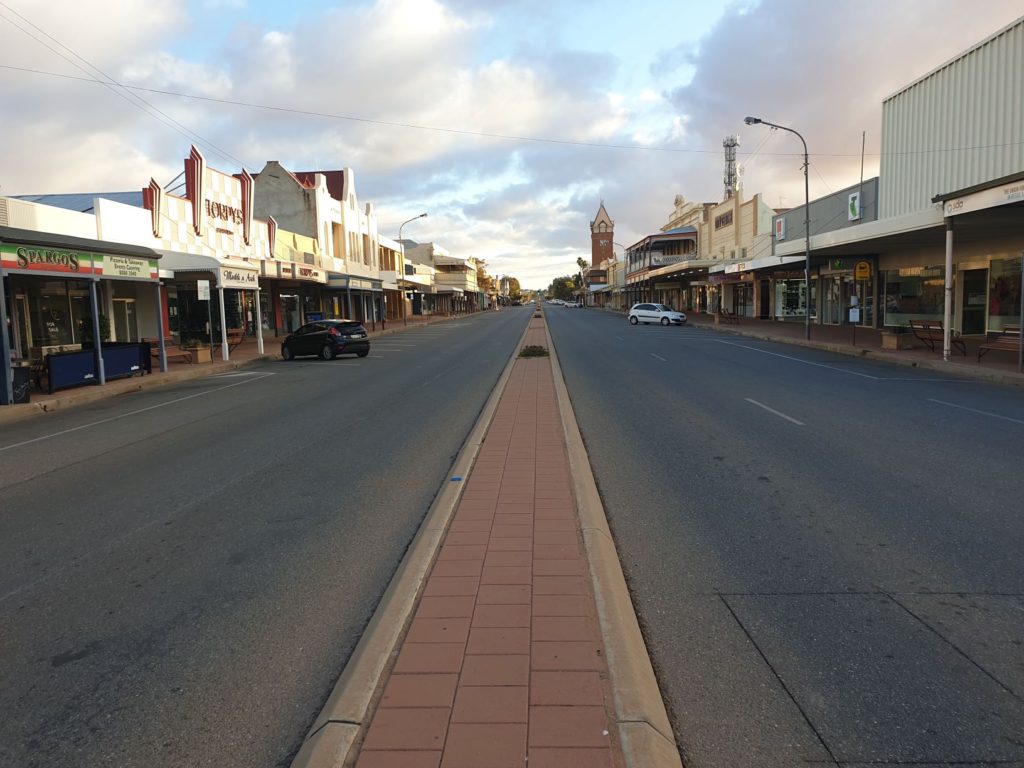
Argent Street is the main street in downtown Broken Hill but it is not the place to be on Sunday afternoon during corona-times
After enduring a less-than-memorable weekend in Broken Hill we headed north across the dry red desert to the campground at Mutawintji National Park. Famous for its rock art and Aboriginal heritage, the national Park is one of the go-to places for outdoor travellers and campers in western NSW.
We walked up the picturesque Mutawintji Gorge, a six kilometre return walk that reintroduced us to some of the landscape that is featured here. The walk ended in a tight gorge formed by huge rocky slopes, permanent waterholes stopping our progress. Later we huddled around our fire on a cool and windy night, looking forward to a special day of exploration the following day.
The next day we retraced the family steps from 21 years ago which was full of reminiscing. We took in the spectacular river walk with its amazing river red gums and native cypress pines, the river winding its way through huge rock mountains. This immense rolling rocky landscape formed the perfect catchment for the heavy storm we found ourselves in all those years ago as water rushed down the little gullies and channels until they filled the creek to flooding, much to our concern.
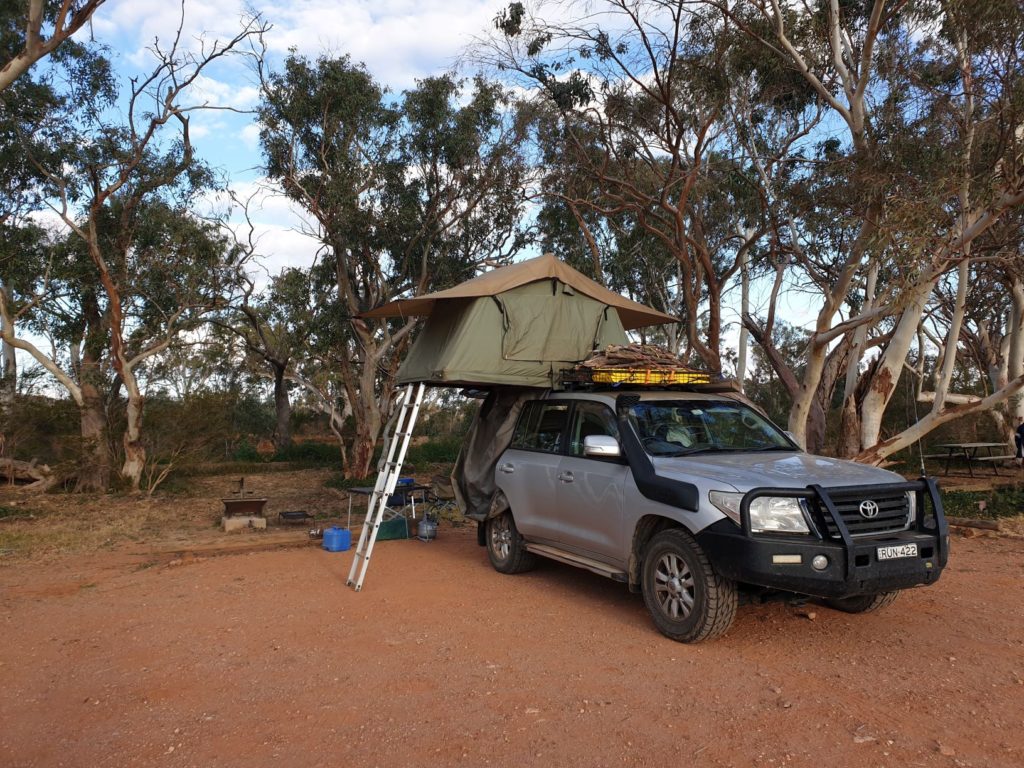
A beaut place to camp and we’ve estimated it is very close to where we camped on the banks of the river with the family
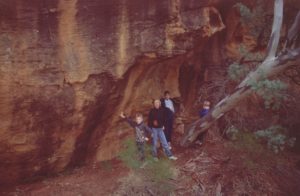
Twenty one years ago the family sheltered under this ledge during the torrential storm – this photo was taken two days later when we retraced the walk under dry conditions
On this second visit the riverbed was dry except for a few rock pools and the skies only threatened to rain. But the scenery was to die for, the hearty trees, the stunning red rock landscape, the numerous aboriginal rock art sites, the rocky creek bed. Julie and I did the full loop trail with all its little add-ons, loving the experience, returning to camp after 11.5 kilometres of this beautiful day, made more special by reminiscing over our past family experience.
The next day we joined a few of our newfound friends from the campsite on a Heritage tour of the aboriginal art sites and historic meeting places in a restricted part of the park. Our aboriginal guide Teanu, also a park ranger, gave us some background of why this area is so important to the local aboriginal tribes before showing us an audio-visual presentation that put the whole experience into historical and dreamtime perspective.
With flies incessantly buzzing all around us, we then walked across the red desert earth and he showed us two important sites absolutely packed with ancient carvings into the rock and paintings on the rock.
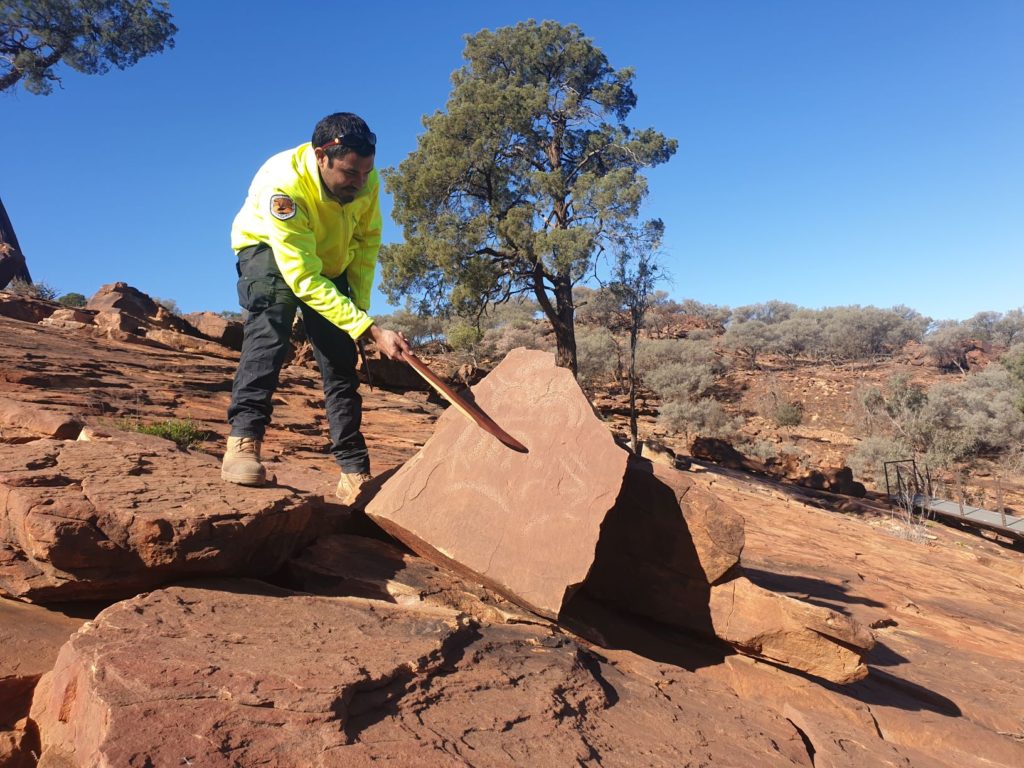
Teanu our guide showing us some of the rock art and providing a fascinating back-story to its history and purpose
All art in this area dates back 8,000 to 12,000 years ago and is significant because this was a meeting place where hundreds, if not thousands, of people would come from as far as 600 kilometres every four years to perform important traditional ceremonies and share stories. It must have been an extraordinary event, all these people together so long ago, in some cases having to travel for months to get there, creating special art to commemorate the occasion. Oh for the chance to time travel!
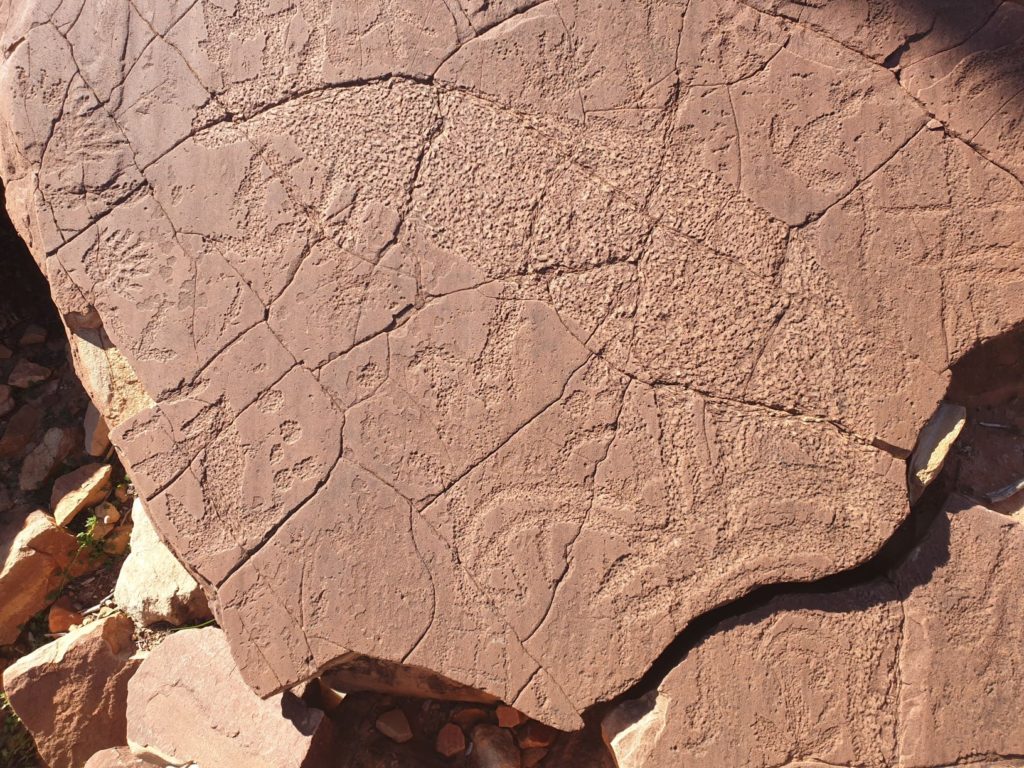
Rock carvings dating back thousands of years tell an ancient story of the original inhabitants of this land
Our heads abuzz with the history, art, cultural ceremonies, bush tucker and the lives of these amazing people we headed to the end of the track in the park for a lunch, sitting amongst the splendour of this ancient red rock country. Then it was back down the track and out of the park as we headed across more desert toward the historic opal mining town of White Cliffs. But no, we couldn’t quite make it that far before the sun dipped low on the horizon so we pulled off the gravel road and made our way behind a slight knoll in the desert to set up camp in the middle of beautiful nowhere. We had seen one car for the last 150 kilometres and had nothing but stars and a roaring fire to keep us company all night. Absolutely perfect.
The next day we drove into the historic and somewhat quirky opal mining town of White Cliffs. Often mentioned as the hottest place in NSW, White Cliffs boomed more than 100 years ago as people searched for the illusive opal that lie beneath the hot desert soil. Today it is nothing more than a wide spot in the road but many people still live in old abandoned underground mines and there is an underground motel for hearty visitors (we actually stayed there as a family after our flash flood experience in Mutawintji).
Onward over 80 kilometres (50 miles) of beautiful red dirt desert to Paroo Darling National Park where we had lunch on the shores of Lake Peery. This national park was set up to protect an important string of natural lakes that are fed by the flooding Paroo River coming down from Queensland before it reaches the Darling River. After a short walk we followed another 110 kilometres (65 miles) of single lane dirt road – and didn’t meet a single car the whole way – before hitting Wilcannia, the historic town on the banks of the Darling River.
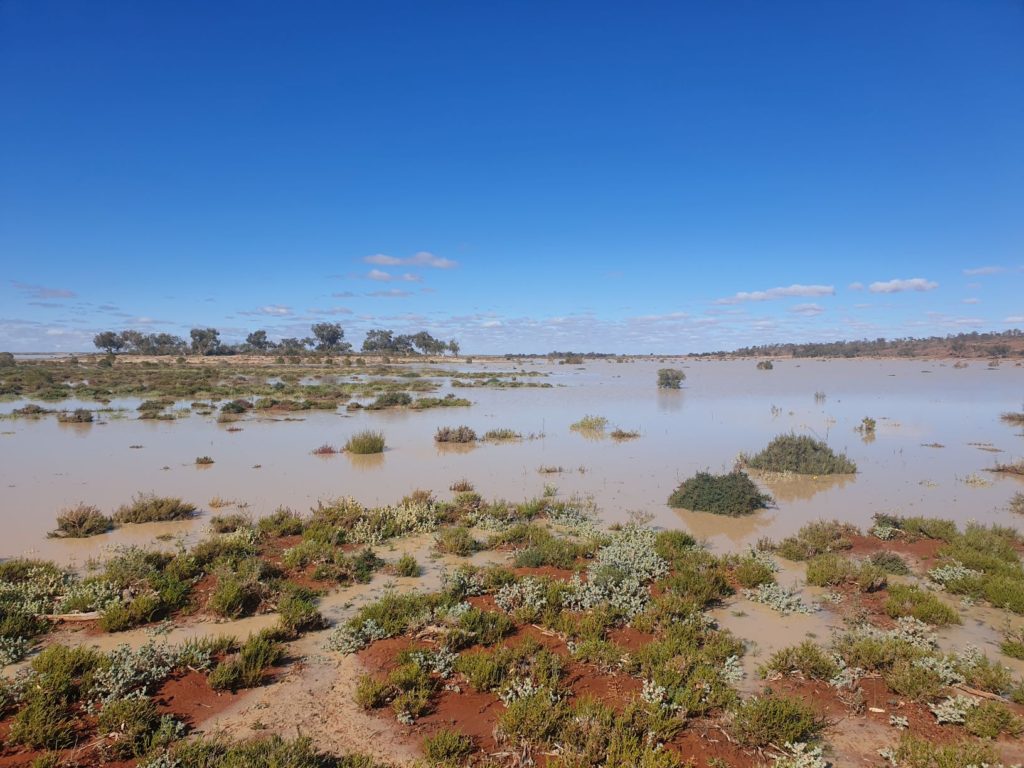
We finally stood on the shores of Lake Peery after a long drive through the national park and a walk across the lake bed to get to its edge
Wilcannia has certainly seen better days, that’s for sure, but we refueled and then followed the track northeast along the Darling River, passing through more sections of the national park, before finding a side track and camping on a tight bend of the river lined with the most magnificent river red gums we had ever seen.
These mammoth trees had girths wider than a big truck and were at least 300, if not 400 years old. We felt honoured to camp near them (but not under them as they are notorious for dropping limbs and there was ample firewood on the ground showing they had frequently done so). I pound out these words as the sun sets on the motionless latte-coloured Darling River, a few cockies voicing their displeasure, otherwise perfect silence. It can’t get any better.
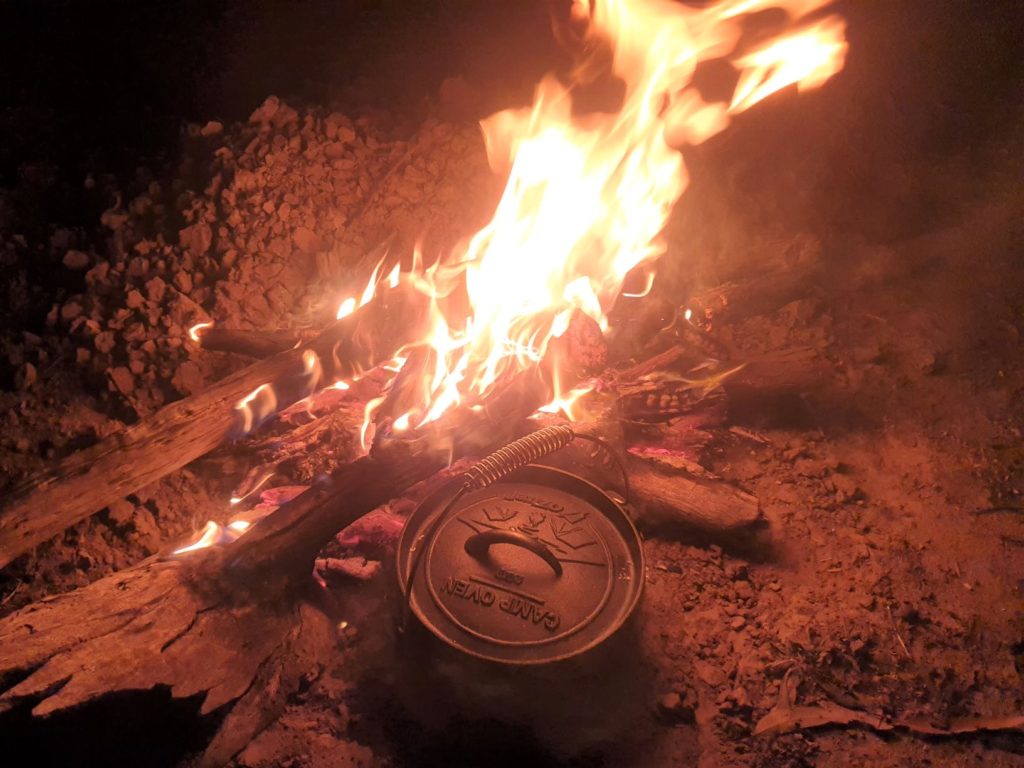
Julie has been using our little camp oven more often these days and turning out some beautiful meals
The statistics of the Darling River tell part of the story. Named after the governor of NSW in 1829, the river runs 3,370 kilometres from near the Queensland border all the way to Wentworth in New South Wales where if meets up with the Murray River. Aborigines lived along the river and off the river for thousands of years.
The river’s catchment area covers a staggering 14% of Australia. But that is also part of the problem because the Darling River doesn’t always flow, sometimes drying up all together, depending on the droughts and water usage. It is a case of feast or famine for all the graziers, farmers, communities and businesses that rely on its precious water. It is also a huge political and economic problem for the country to work out how to apportion the water which both protects the environment and keeps all these stakeholders going. A very messy affair, to be sure.
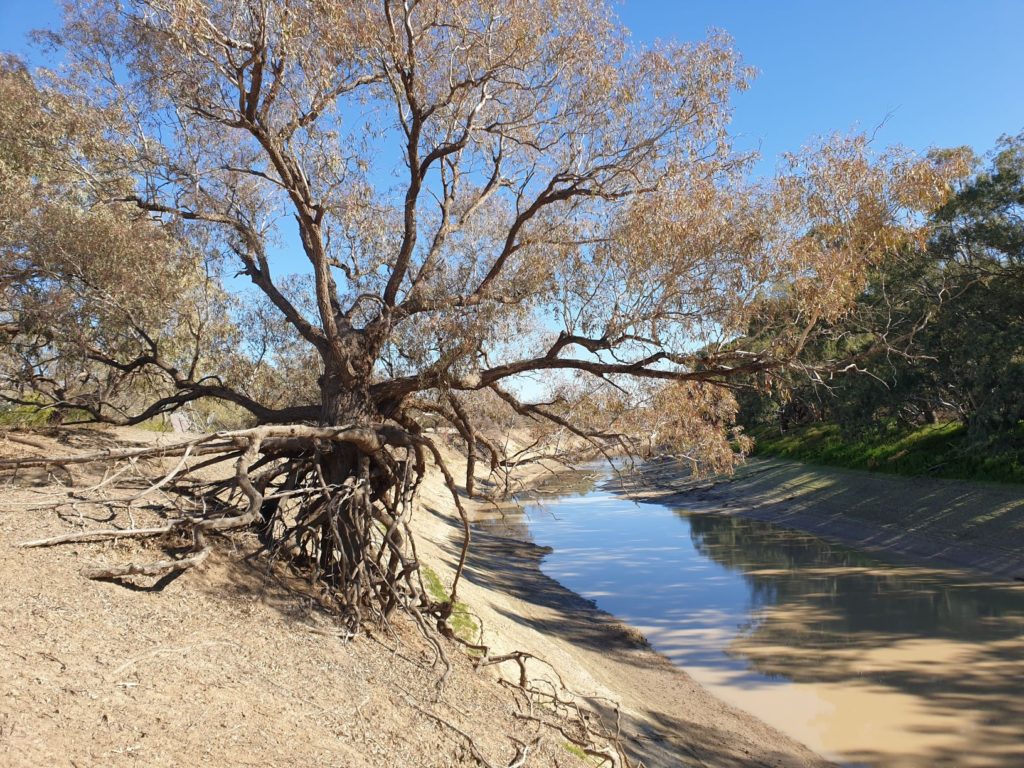
A youngish river red gum is clinging on for dear life as the river exposes its roots during rare floods
The next day was more of the same, a narrow dirt track across ancient flood plains, the river contorting itself across the flatness of the land, huge gums lining its banks. We followed a number of dirt tracks to the river’s edge, or more precisely the edge of the steep precipice down to the water itself. We could tell the river had been higher and later heard it peaked about a month ago and was now down about five metres from its highest point. That’s a lot of water.
At the small historic outpost of Tilpa we used the 70 year old bridge to temporarily cross the river and check out their old pub – the only business in town. We then continued up the eastern side of the river, crossing pastoral stations as we went, pulling into more places to admire the river, then pushing on.
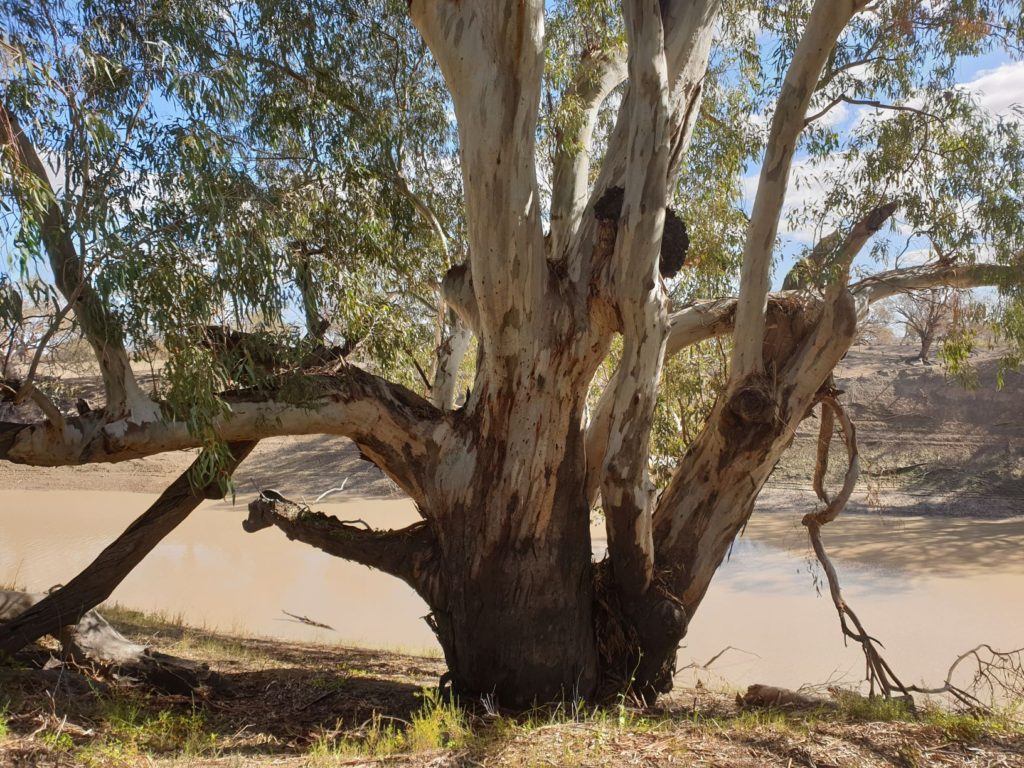
Another sample of these wonderful trees, massive girth, a dozen huge branches shooting off in all directions – gum trees on steroids
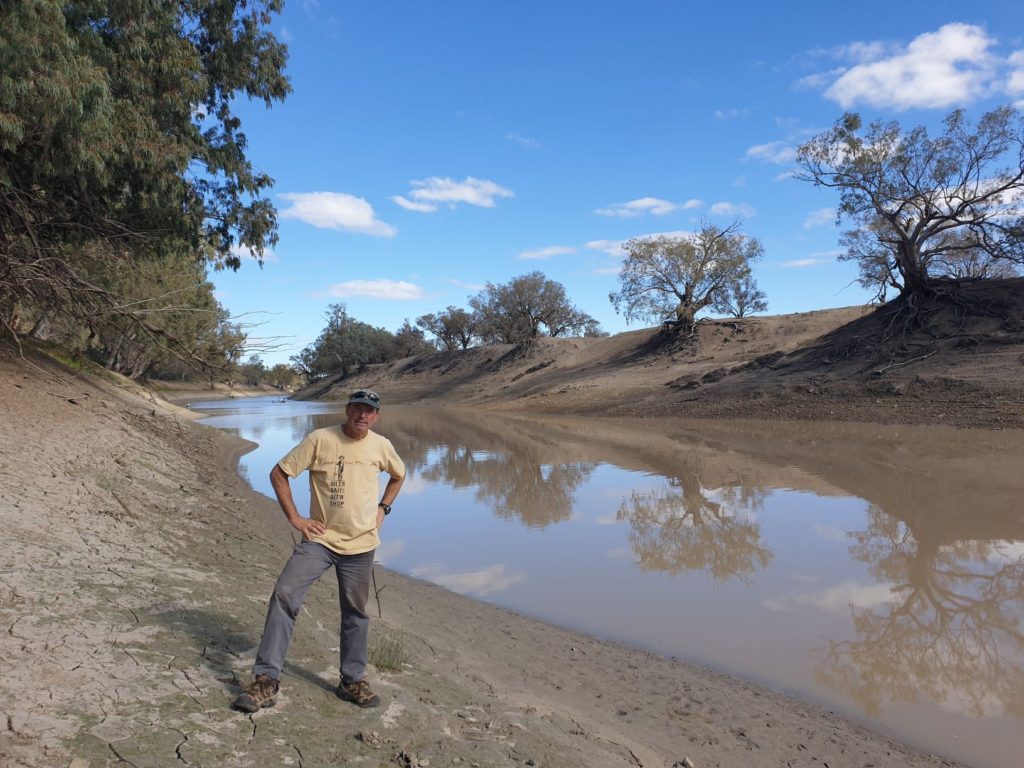
In most places the banks of the river are too steep to go down to the water’s edge but we found this place where we could make it
Eventually we arrived in Louth, another old river community where nearby pastoralists would bring their wool for transport down the river on paddle steamers and on to overseas ports. Today Louth officially has 40 people but its hard to imagine where they were all hiding. We crossed over and headed a short way south to the station call Trilby which in addition to their strong sheep herds now caters for campers on the river’s banks. We enjoyed hot showers and a beautiful evening perched high on the steep banks, looking down on this peaceful and timeless scene.
But the Darling River and this area of NSW still had more to offer us over the next few days and as we like to say – every day of travel is a day of adventure and discovery.
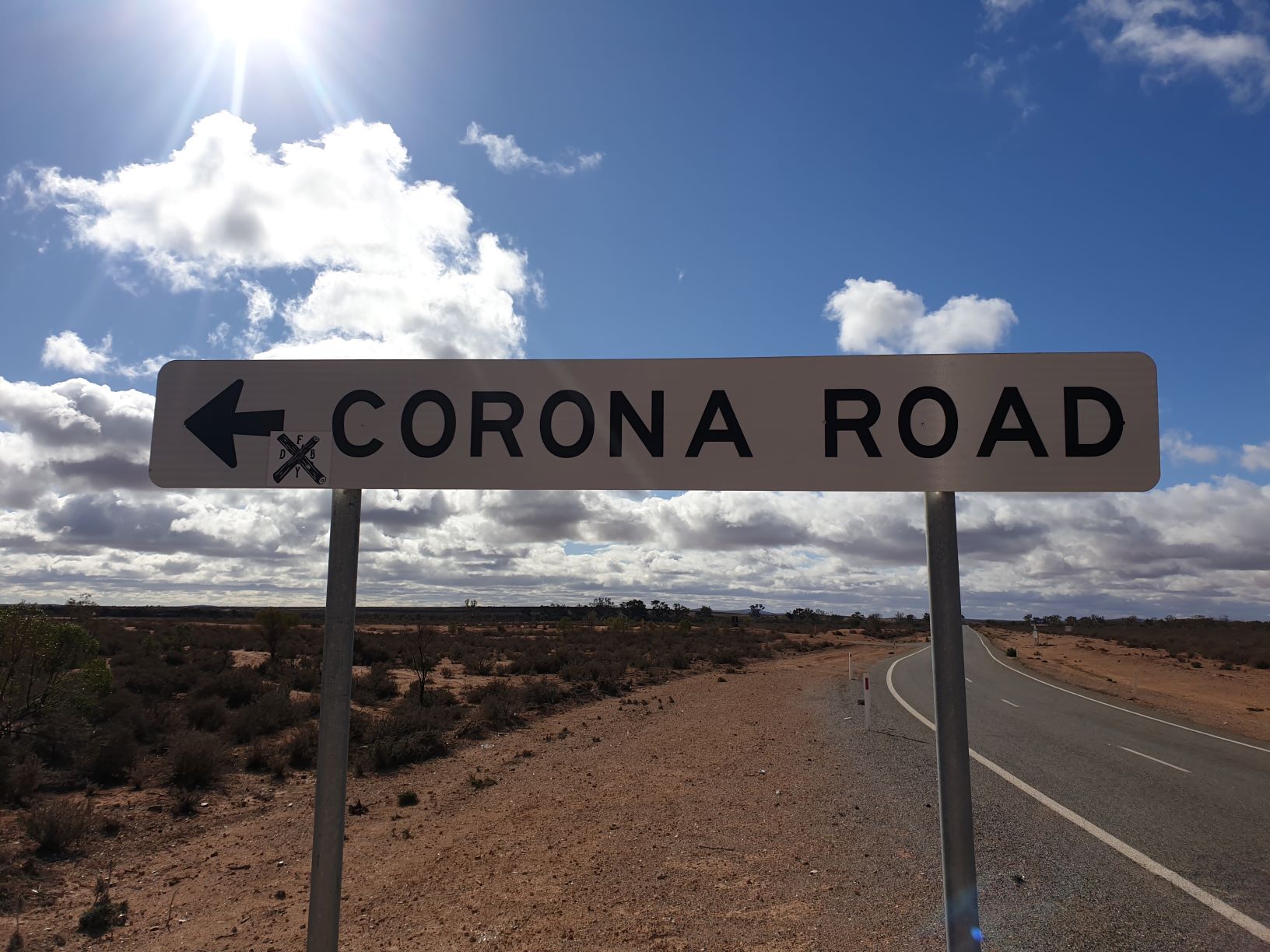
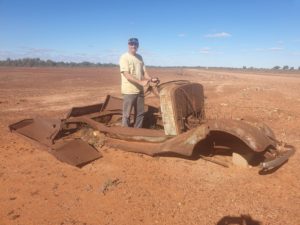
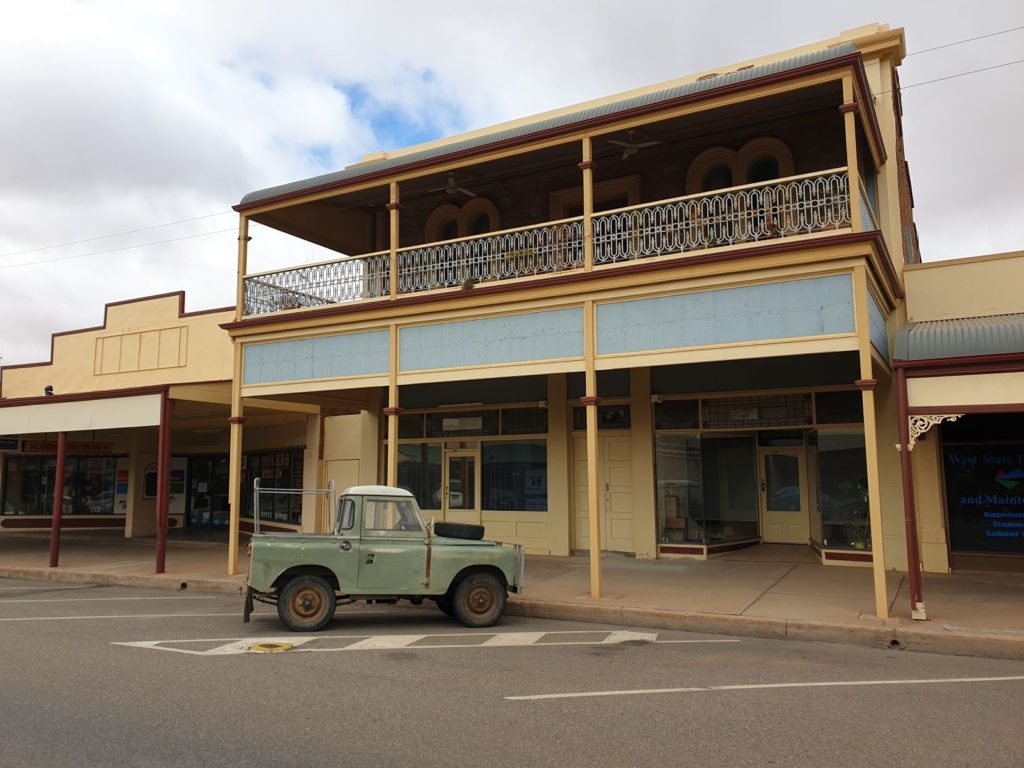
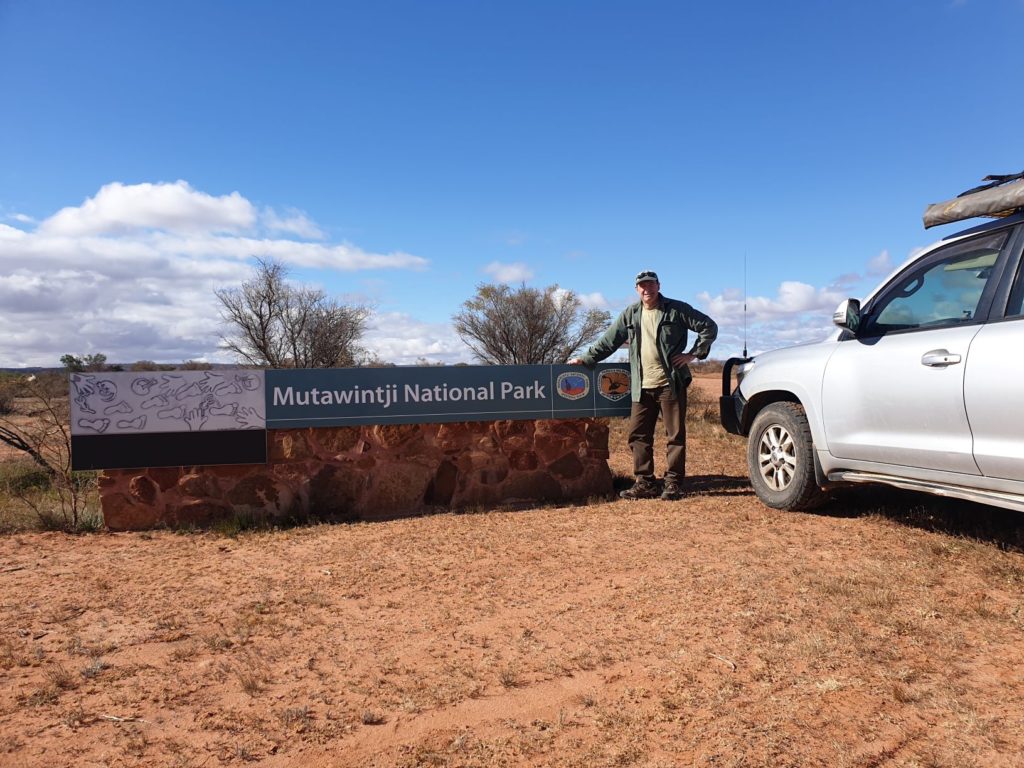
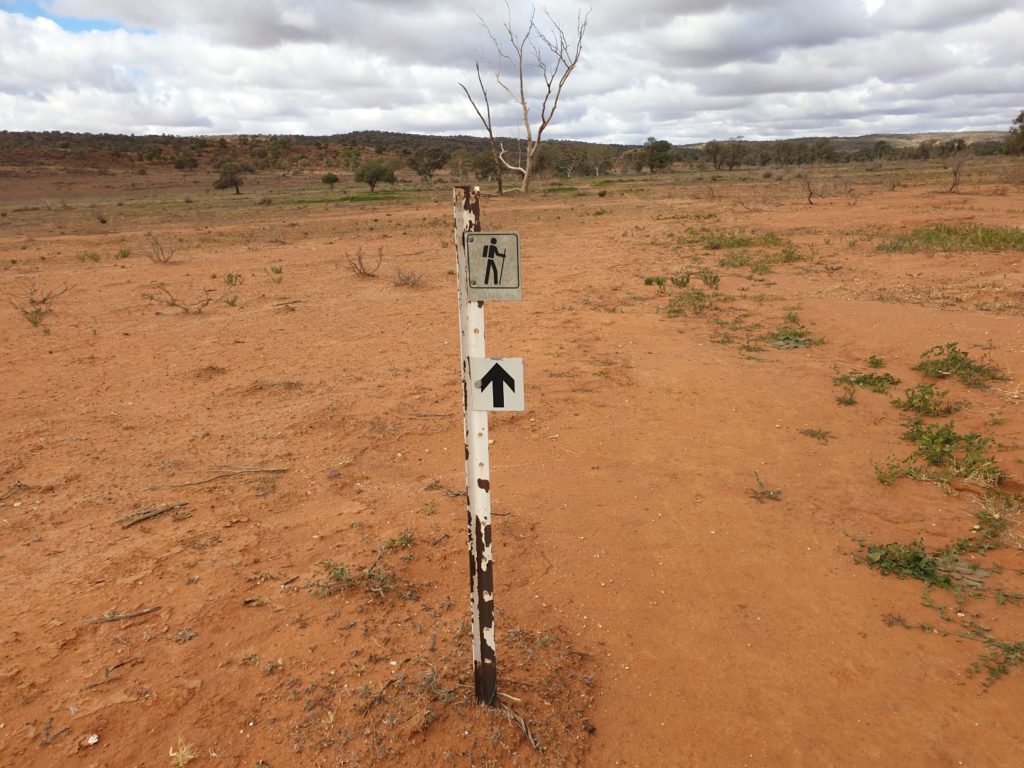
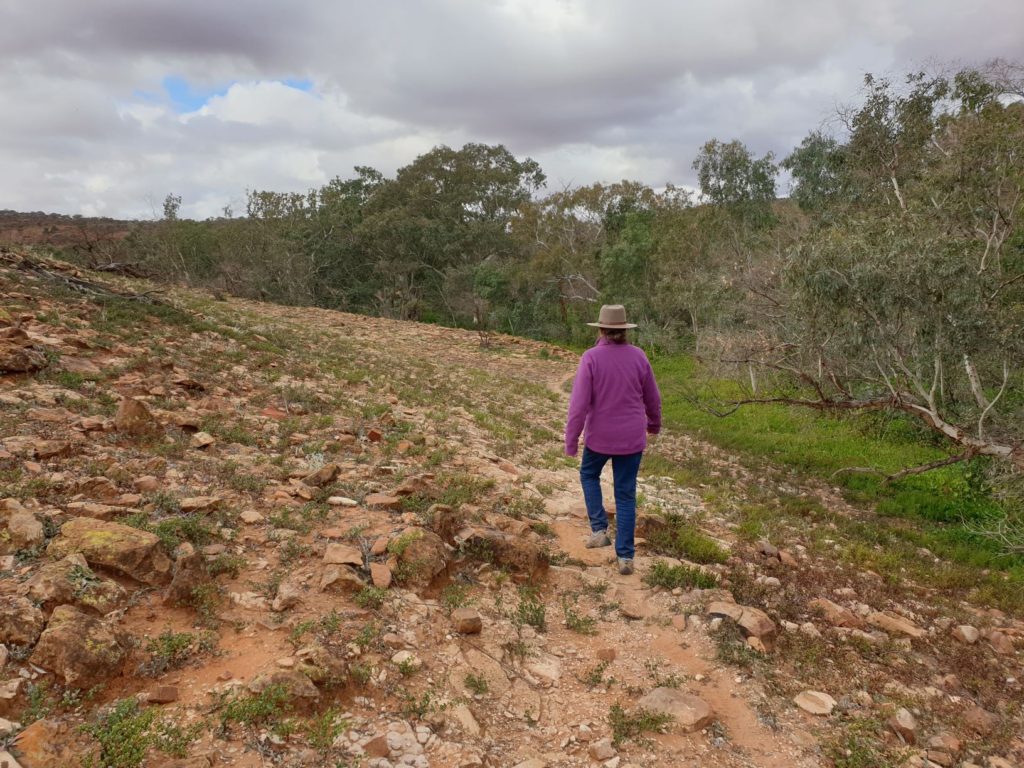
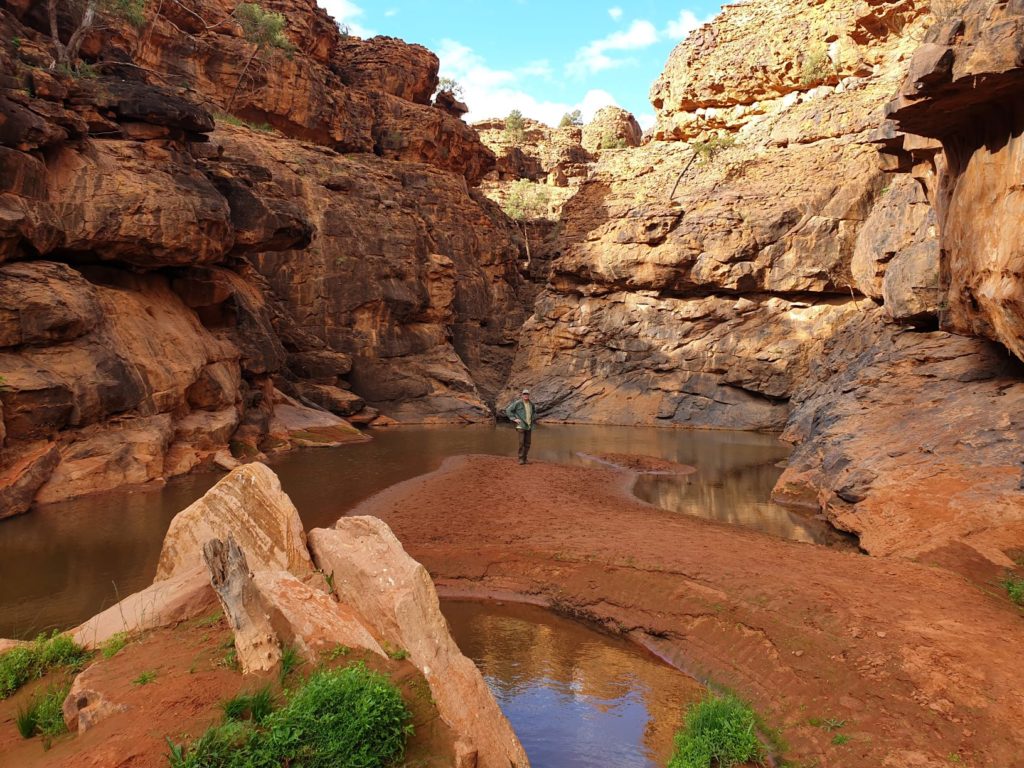
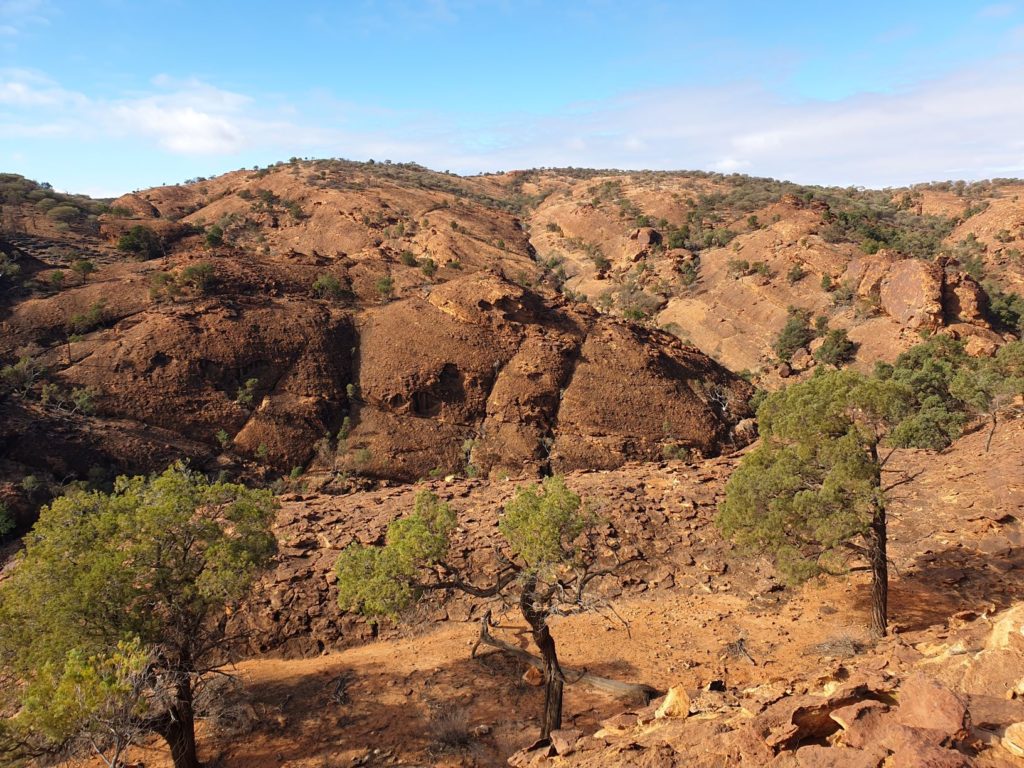
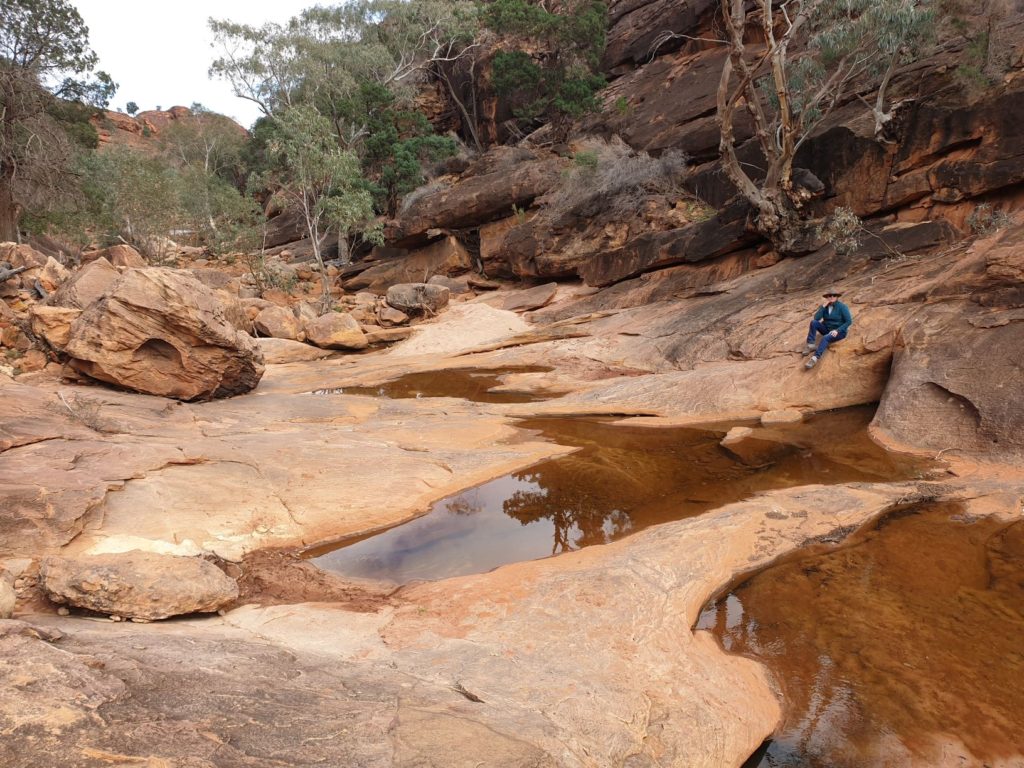
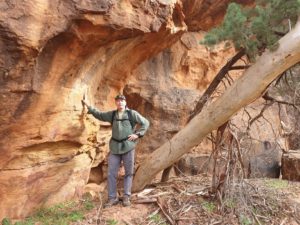
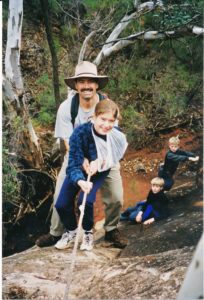
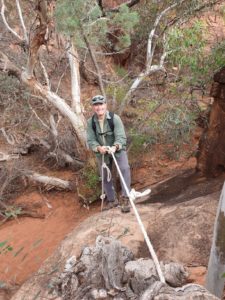
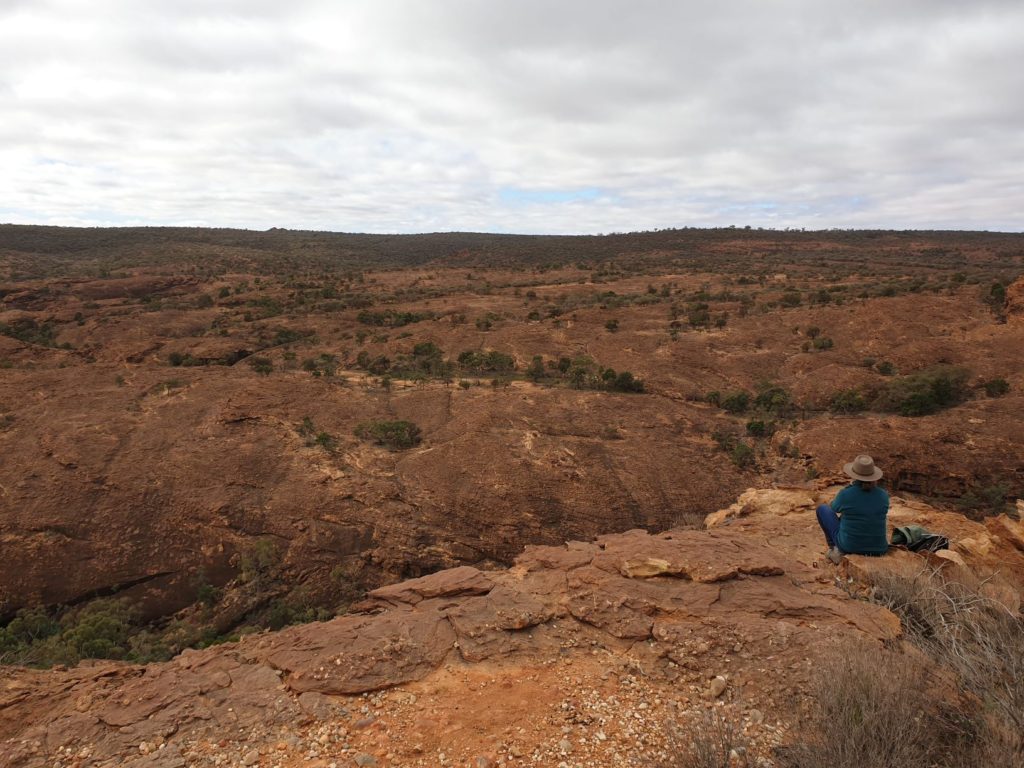
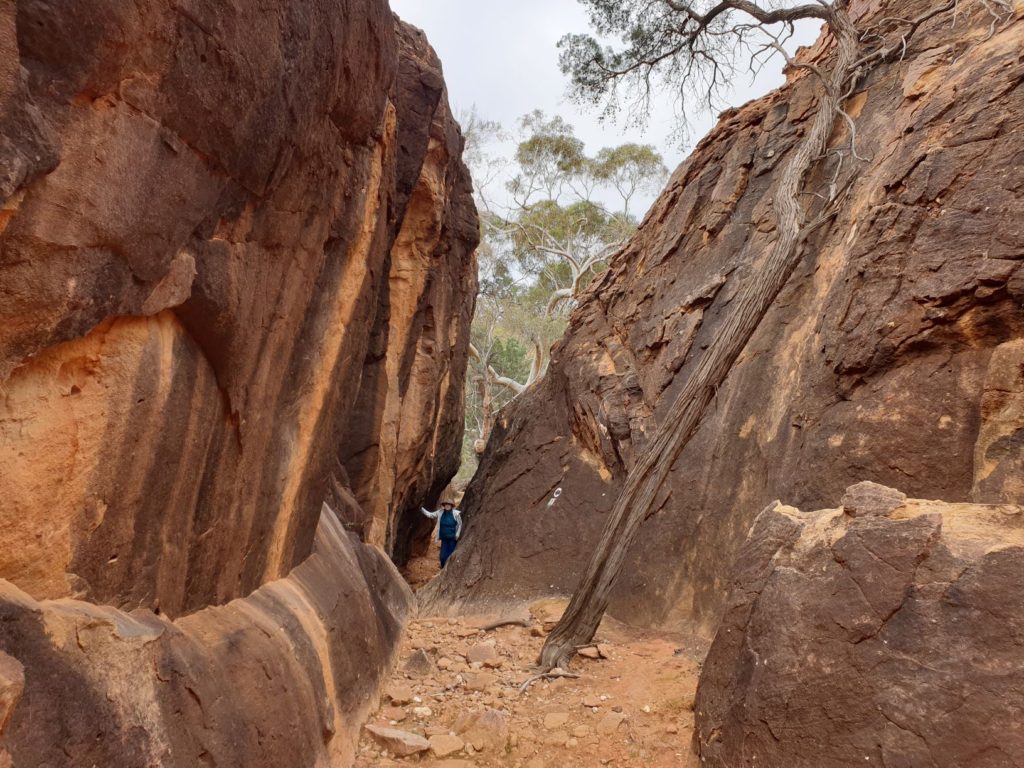
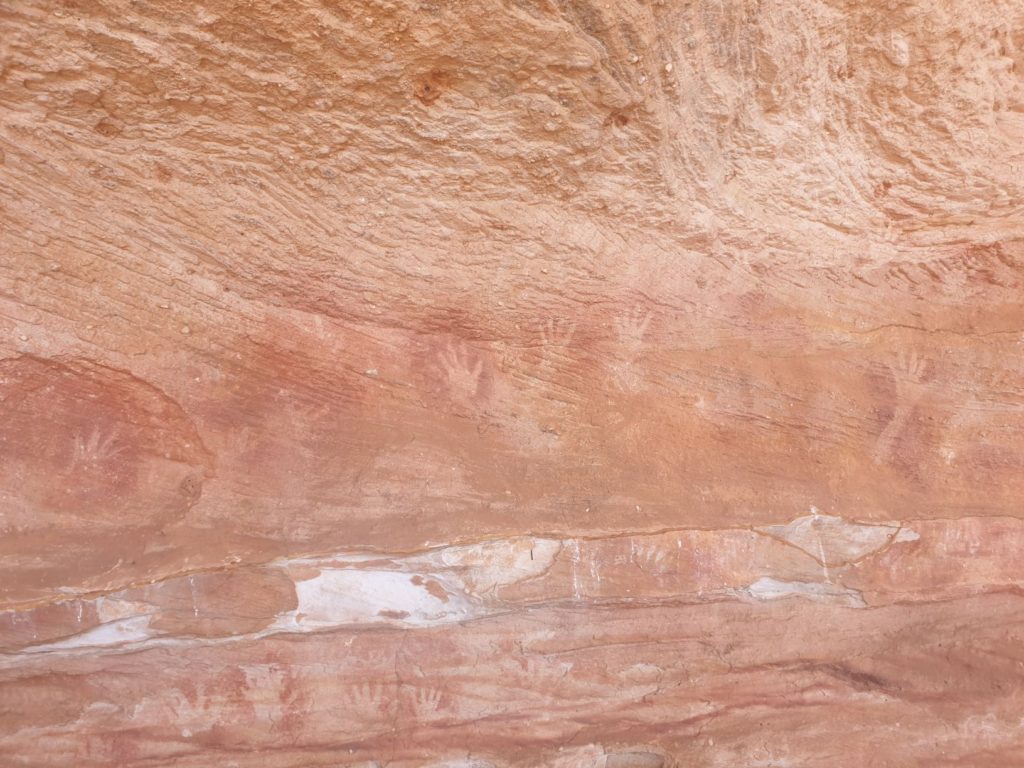
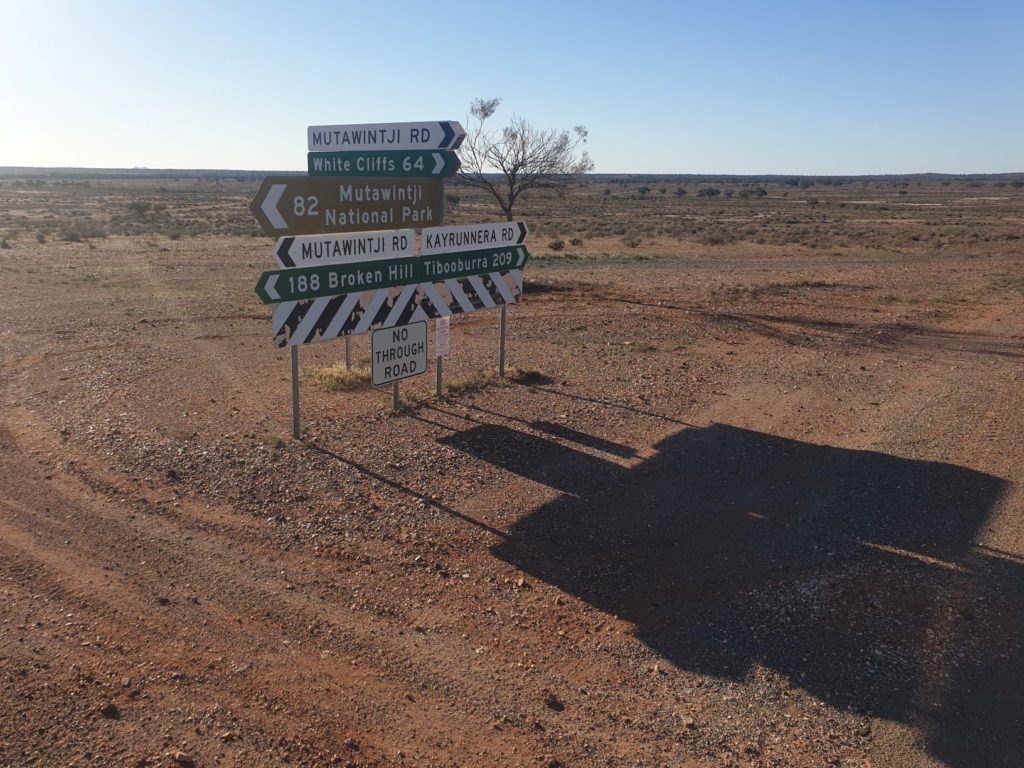
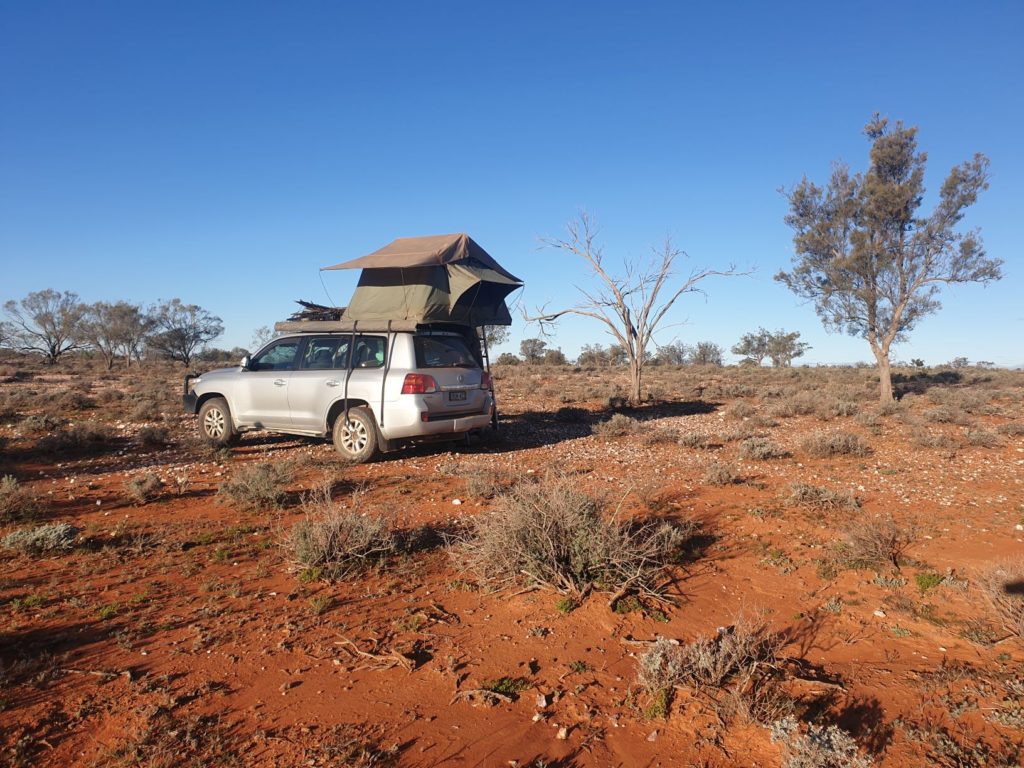
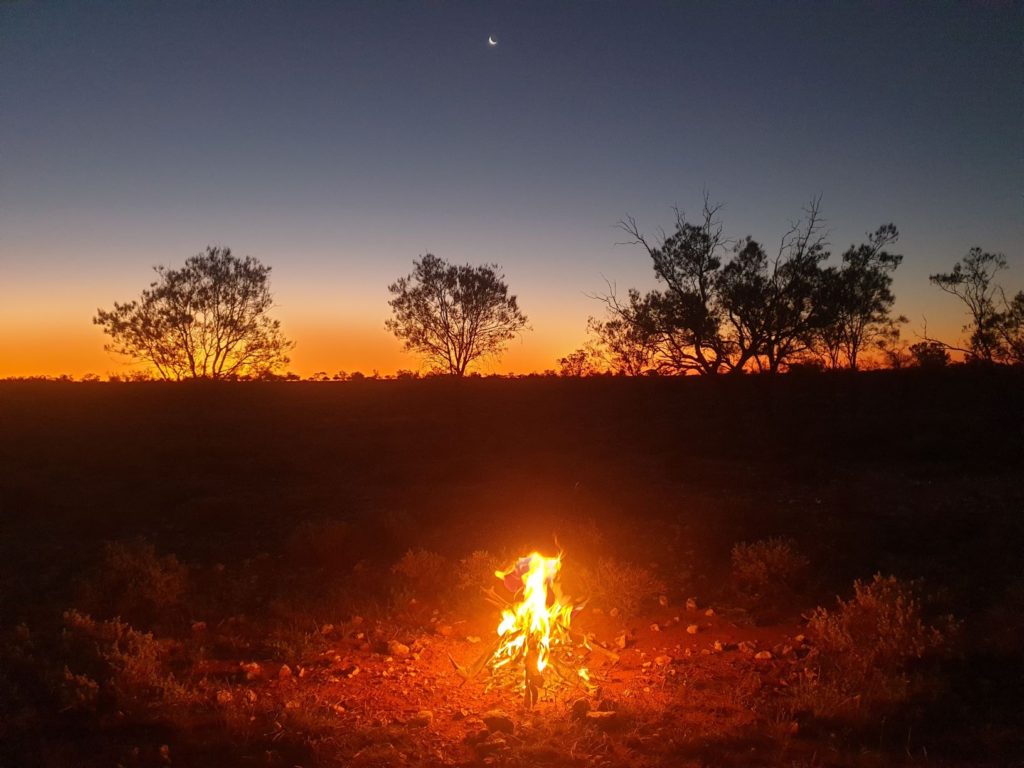
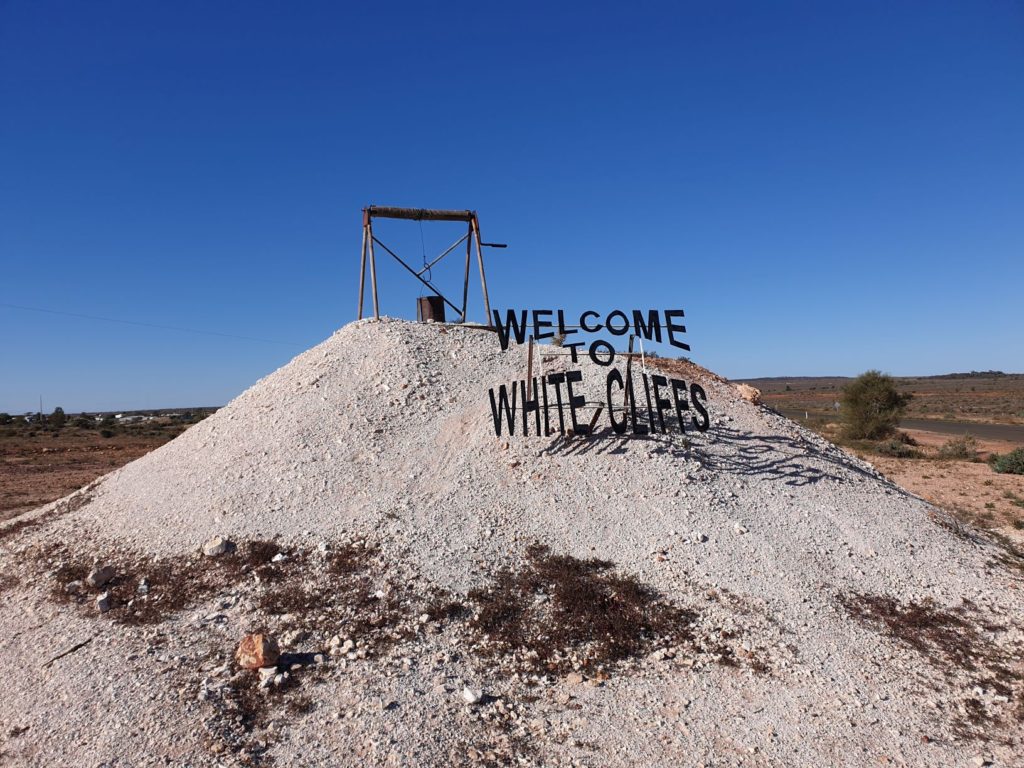
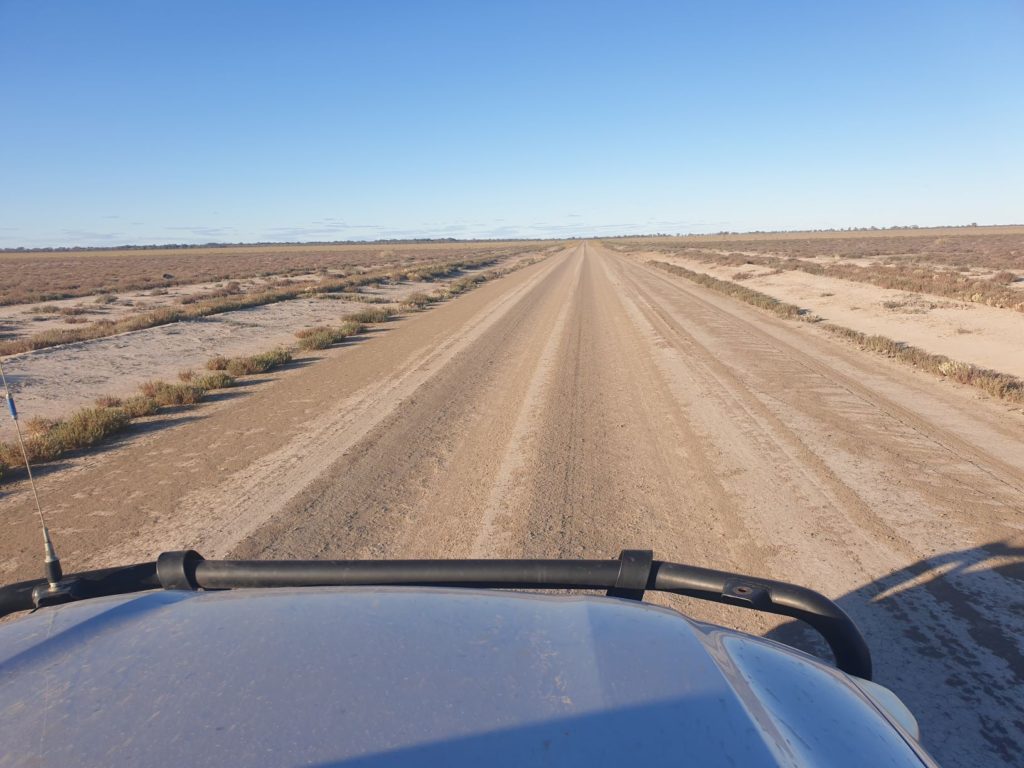

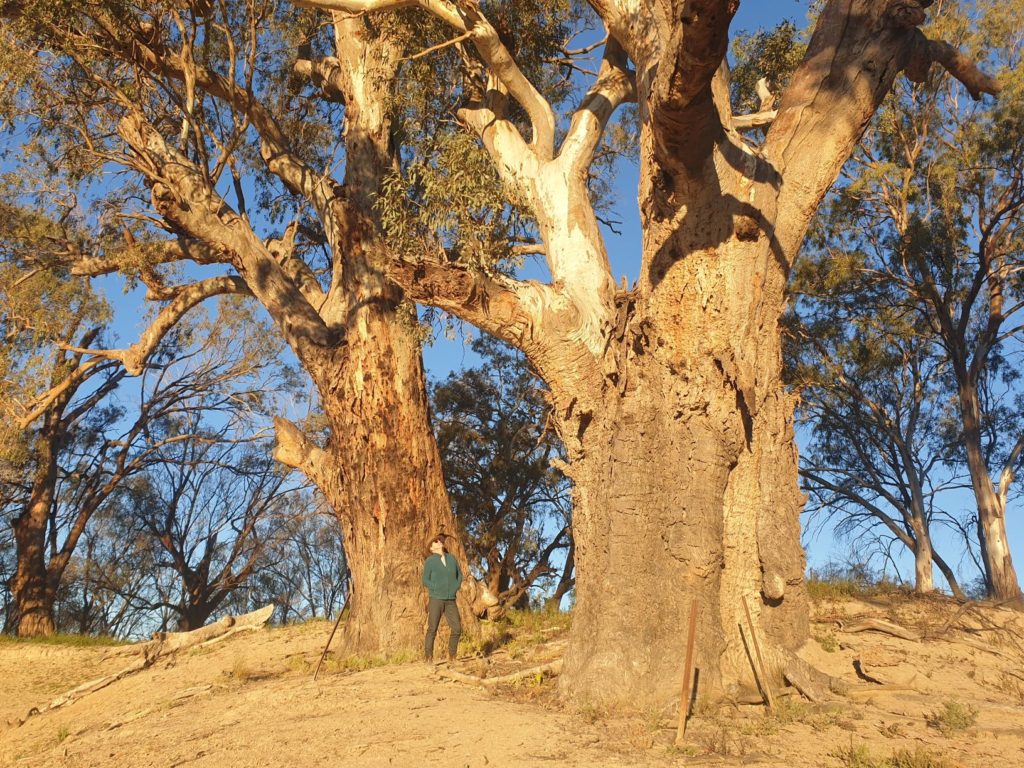
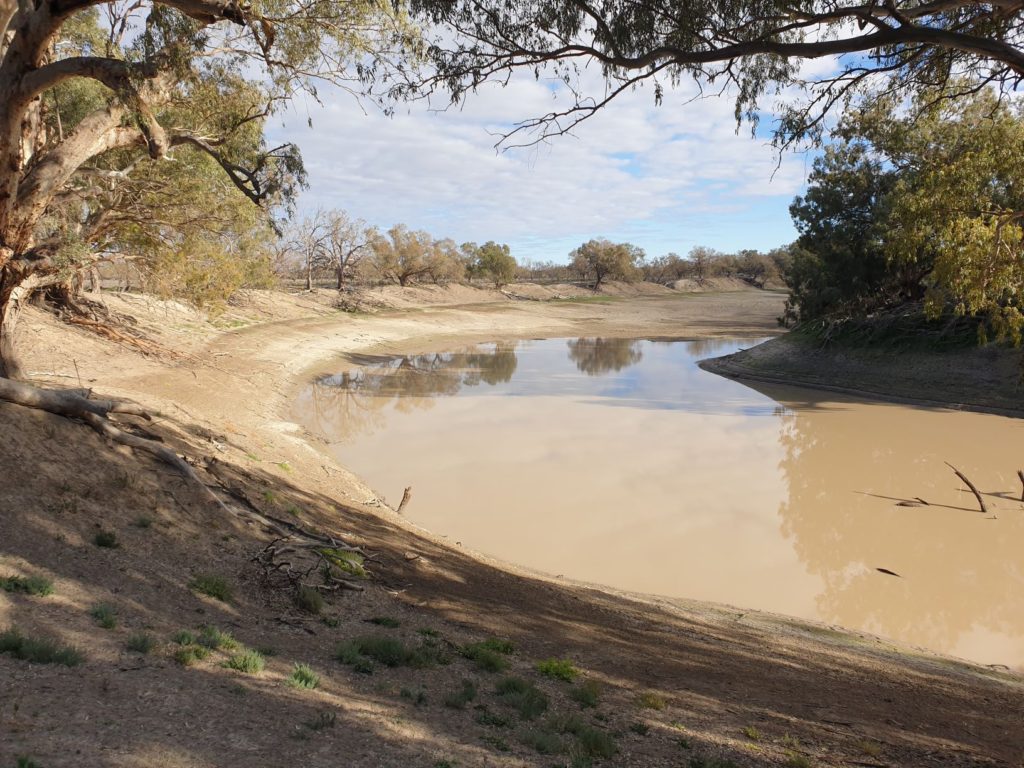
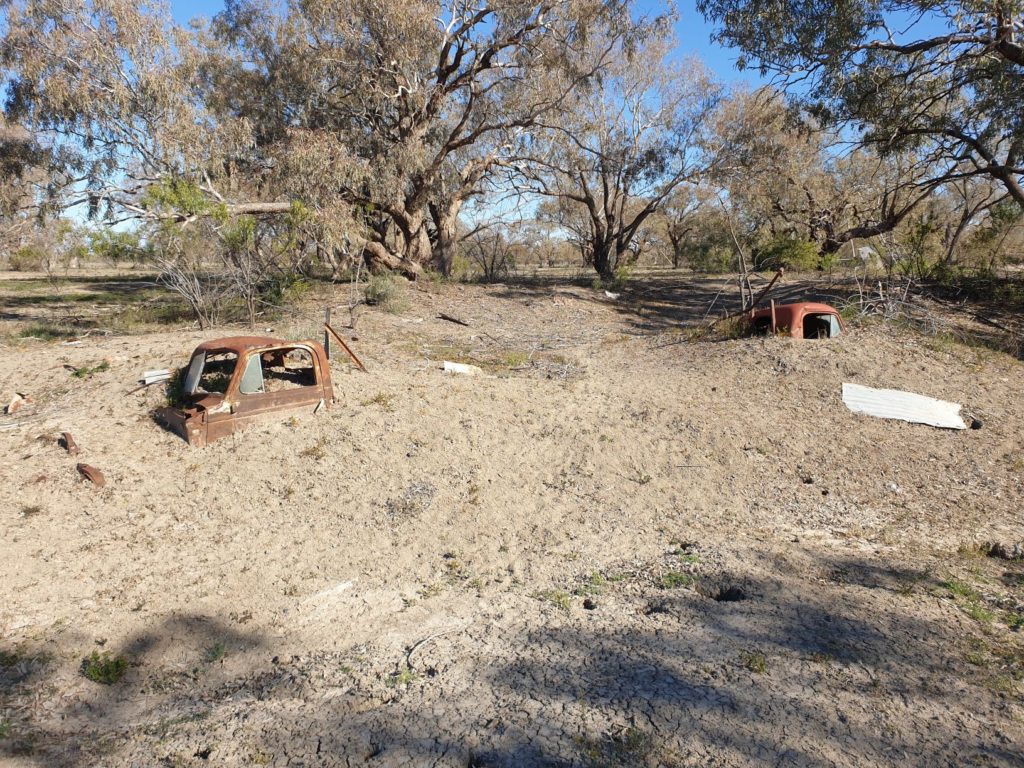
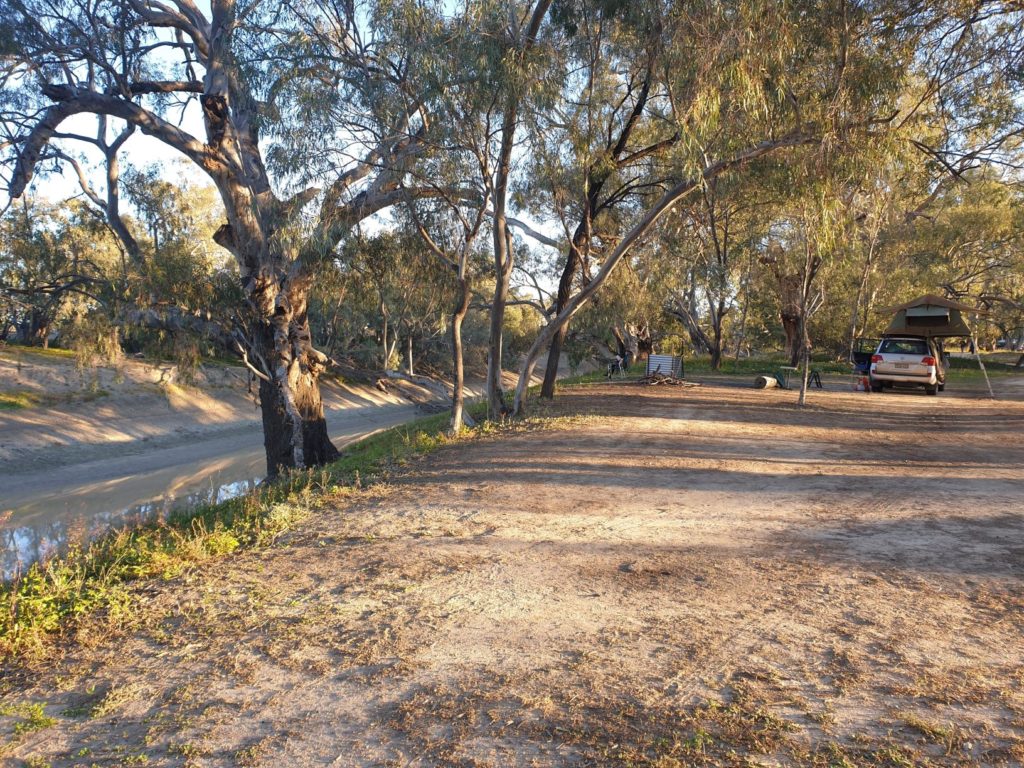
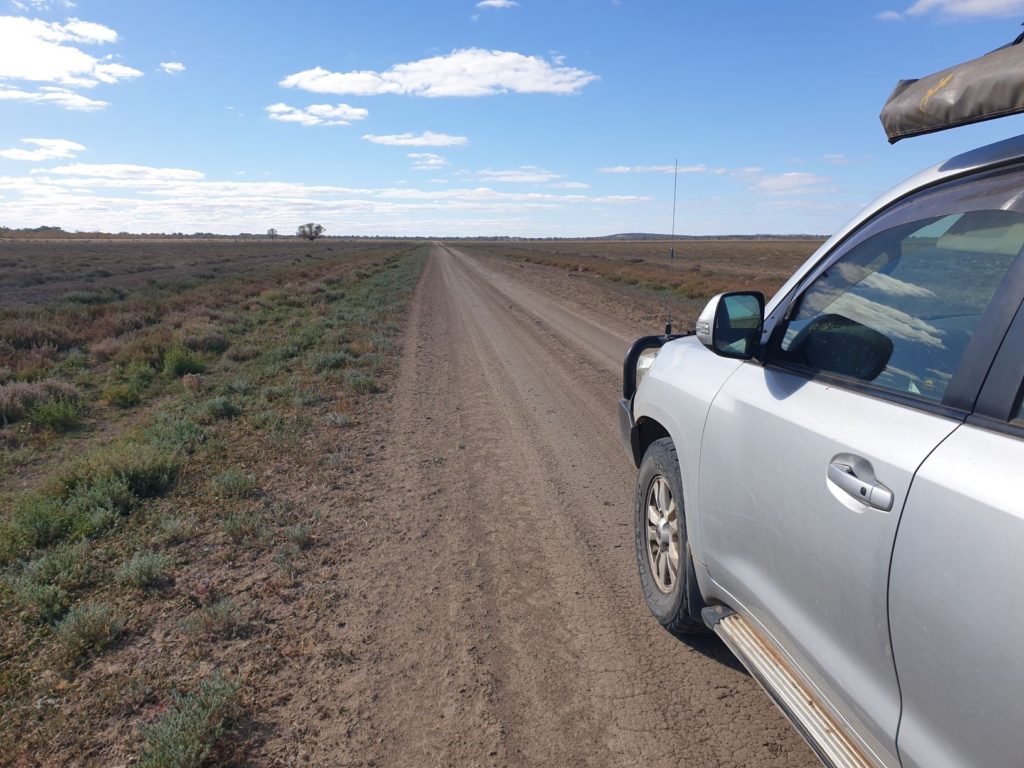
Comments
Mutawintji and the Darling — No Comments
HTML tags allowed in your comment: <a href="" title=""> <abbr title=""> <acronym title=""> <b> <blockquote cite=""> <cite> <code> <del datetime=""> <em> <i> <q cite=""> <s> <strike> <strong>